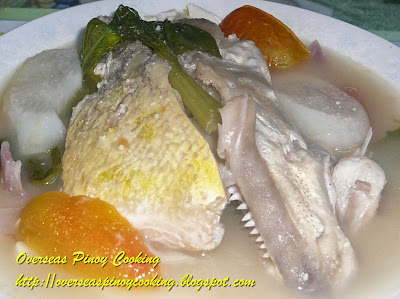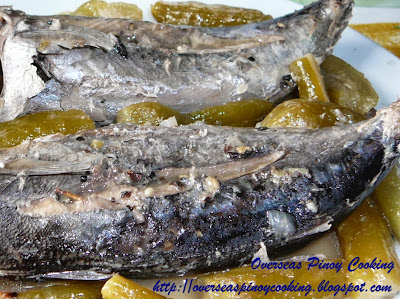Tinolang Tahong

Tinolang Tahong is a simple Pinoy way of cooking tahong or mussels. The broth of tinolang tahong is very refreshing. The best way to cook is first boil the water with the aromatics before adding the mussels. Should you prefer more broth then you have to add more water and little salt to taste. Tinolang Tahong with Sotanghon and Spinach Recipe Lemongrass could be boiled with the water if you want an additional zest to the dish. Overcooking will shrink the mussel meat therefore it is very important that is should be cooked until the shells had opened. Ingredients: 1 kilo tahong , mussel 1 thumb size ginger, sliced into strips 1/2 head garlic, crushed 1 medium size onion, sliced 1 bundle kangkong tops, trimmed 2-3 pieces green sili cooking oil Cooking procedure: Wash mussels and place in a bowl, cover with water and let sit in for several hours to allow the mussels to expel dirt and discard water, wash and drain. In a wok or pan sauté garlic, ginger ...














